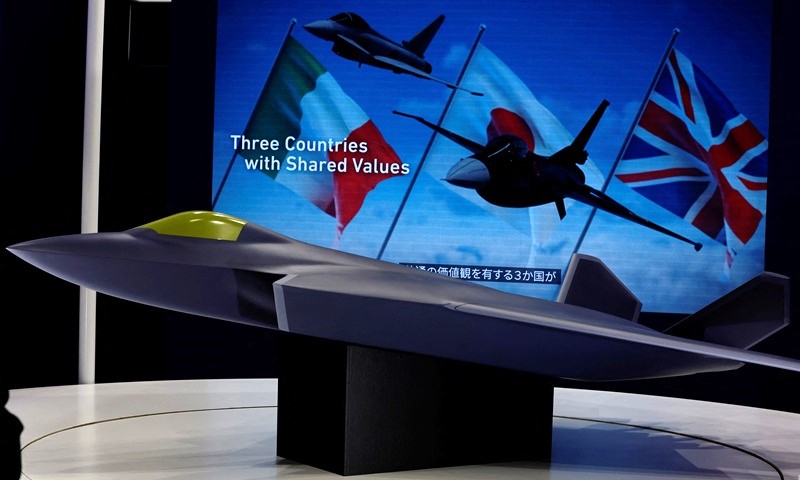Japan relaxed its strict defense equipment transfer regulations, enabling the global export of next-generation fighter jets it’s collaboratively developing with Britain and Italy, to remove a significant obstacle for the trilateral project.
Prime Minister Fumio Kishida’s Cabinet approved the revised guidelines of the “three principles on transfer of defense equipment and technology” after reaching an agreement on the updated export rules with his ruling Liberal Democratic Party and its junior coalition partner, the Komeito party, on March 15.
Under the revised rules, Japan is permitted to export the fighter jets, targeted for deployment by 2035 by the three governments, to a third country. However, it is specified that the warplanes will never be transferred to a country where conflict is taking place.
Japan needs to “have an exporting scheme” to ensure that the country can develop a “fighter jet with capabilities that meet our nation’s security needs,” and that it can participate in the three-way project with Britain and Italy as an “equal partner,” the Cabinet said.
The new regulations also specify that the destination of exported fighter jets will be restricted to nations that have signed agreements with Japan on defense equipment and technology transfers. Presently, there are 15 such nations, including Japan’s close security ally, the United States.
Each future individual case will require separate Cabinet approval before sales are finalized, according to the government.
The restrictions on fighter jet exports were introduced as the conservative Kishida-led LDP aimed to reassure Komeito, a traditionally pacifist party with a dovish stance on security issues, which feared Japan might sell arms without due process and exacerbate conflicts.
Kishida emphasized that permitting Japan to export the fighter jets to third countries is “necessary” to ensure cost-effective spending on the warplane’s development and to uphold Tokyo’s credibility as a partner in future international defense projects.
Under its war-renouncing Constitution, Japan had maintained the ban on the export of internationally co-developed weapons to third countries.
Why is Japan moving away from its pacifist stance?
In its decision, the Cabinet highlighted that the ban on exporting finished products would impede efforts to develop the new jet and relegate Japan to a supporting role in the project. Italy and the U.K. are keen to make sales of the jet to offset development and manufacturing costs.
U.K. Defense Minister Grant Shapps has consistently stressed the need for Japan to update its policies to prevent project delays.
Kishida sought Cabinet approval before signing the GCAP agreement in February but faced resistance from his junior coalition partner, the Buddhist-backed Komeito party.
Export opportunities would also bolster Japan’s defense industry, which historically has served only the country’s Self Defense Force, as Kishida aims to strengthen the military. Japan began allowing some exports in 2014, but the industry has struggled to attract customers.
This change coincides with Kishida’s planned state visit to Washington in April, during which he is expected to emphasize Japan’s readiness to play a greater role in military and defense industry partnerships.


